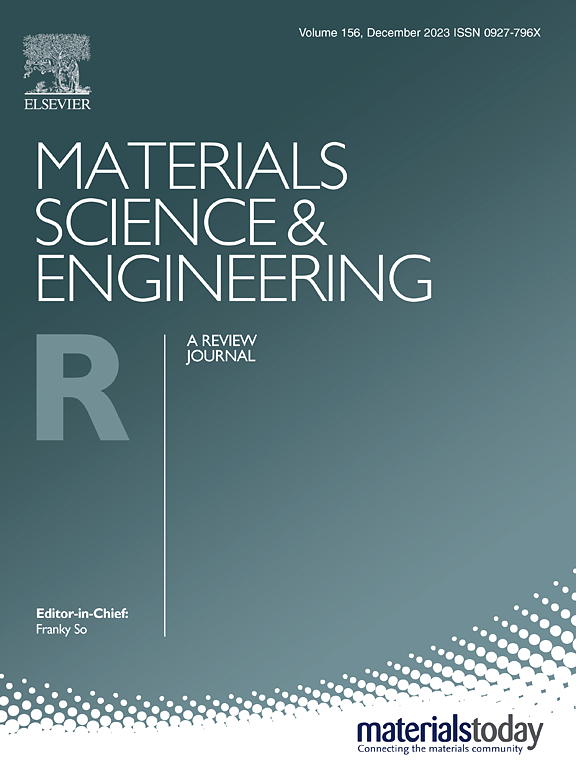High-rate, long-lifespan, sustainable potassium-ion batteries enabled by non-fluorinated solvents
IF 31.6
1区 材料科学
Q1 MATERIALS SCIENCE, MULTIDISCIPLINARY
引用次数: 0
Abstract
Electrolyte solvation chemistry is a key strategy for enhancing battery performance. Herein, we achieve an ultra-high-rate and long-cycle-life potassium-ion battery (PIB) by introducing a fluorine-free ether, (i.e., cyclopentylmethyl ether (CPME)), into a trimethyl phosphate (TMP)-based electrolyte under non-fluorinated and normal-concentration conditions. We discover that CPME and TMP form intermolecular interactions via electropositive hydrogen (δ+H) and electronegative oxygen (δ–O), which effectively weaken the K+-TMP interaction. This modification enables highly reversible K+ (de-)intercalation within the graphite electrode, not only overcoming the critical challenges of K+-solvent co-intercalation in graphite electrodes but also significantly improving the PIB’s rate capability and cycling stability. The newly designed KC8||3,4,9,10-perylenetetracarboxylic diimide (PTCDI) full cell has sustainable features that can operate stably at 10 C for over 1000 cycles, retaining 84.4 % of its initial capacity. Even at 15 C, it delivers a remarkable capacity of 65.6 mAh g−1, corresponding to 53.0 % of the capacity at 0.2 C. Furthermore, we propose a molecular interface model to analyze the interfacial behavior of K+-solvent-anion complexes and elucidate the relationship between intermolecular interactions and graphite electrode performance at the molecular level. This work highlights the importance of solvation structure regulation via intermolecular interactions in developing high-performance PIBs, offering new insights into functionalized metal-ion battery design.
高倍率,长寿命,可持续钾离子电池由无氟溶剂实现
电解质溶剂化化学是提高电池性能的关键策略。在此,我们通过在无氟和正常浓度条件下将无氟醚(即环戊基甲基醚(CPME))引入磷酸三甲酯(TMP)基电解质中,实现了超高倍率和长循环寿命的钾离子电池(PIB)。我们发现CPME和TMP通过电正氢(δ+H)和电负氧(δ - o)形成分子间相互作用,有效地削弱了K+-TMP相互作用。这种修饰使石墨电极内的K+(脱)嵌入具有高度可逆性,不仅克服了石墨电极中K+-溶剂共嵌入的关键挑战,而且显著提高了PIB的速率能力和循环稳定性。新设计的KC8||3,4,9,10-苝四羧酸二亚胺(PTCDI)全电池具有可持续的特点,可以在10 ℃下稳定运行超过1000次循环,保持其初始容量的84.4 %。即使在15 C时,它也提供了65.6 mAh g−1的显着容量,相当于0.2 C时容量的53.0 %。此外,我们提出了一个分子界面模型来分析K+-溶剂-阴离子配合物的界面行为,并在分子水平上阐明分子间相互作用与石墨电极性能之间的关系。这项工作强调了通过分子间相互作用调节溶剂化结构在开发高性能PIBs中的重要性,为功能化金属离子电池的设计提供了新的见解。
本文章由计算机程序翻译,如有差异,请以英文原文为准。
求助全文
约1分钟内获得全文
求助全文
来源期刊

Materials Science and Engineering: R: Reports
工程技术-材料科学:综合
CiteScore
60.50
自引率
0.30%
发文量
19
审稿时长
34 days
期刊介绍:
Materials Science & Engineering R: Reports is a journal that covers a wide range of topics in the field of materials science and engineering. It publishes both experimental and theoretical research papers, providing background information and critical assessments on various topics. The journal aims to publish high-quality and novel research papers and reviews.
The subject areas covered by the journal include Materials Science (General), Electronic Materials, Optical Materials, and Magnetic Materials. In addition to regular issues, the journal also publishes special issues on key themes in the field of materials science, including Energy Materials, Materials for Health, Materials Discovery, Innovation for High Value Manufacturing, and Sustainable Materials development.
 求助内容:
求助内容: 应助结果提醒方式:
应助结果提醒方式:


